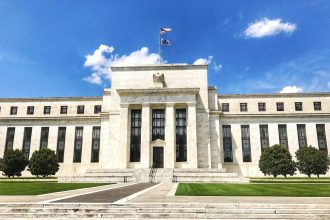OBSERVATIONS FROM THE FINTECH SNARK TANK
In 2022, President Biden signed an executive order directing the government to develop a framework for digital assets and financial technologies. In July, the US Treasury released Strengthening American Leadership in Digital Financial Technology, a policy roadmap for federal agencies with innovation implications for banks.
For too long, innovation in US financial services has proceeded without a cohesive national strategy. As a result, regulation has lagged behind market developments, and public infrastructure has failed to keep pace with the needs of a digital economy.
Meanwhile, other nations—notably China, the United Kingdom, and the European Union—have made significant investments in their digital finance capabilities, coordinated regulatory reforms, and launched government-backed initiatives to modernize payments, identity, and data frameworks.
The Treasury’s report is a wake-up call: if the US is to remain a global financial leader, the public and private sectors must align around a shared vision for modernization.
From Fragmentation to Coordination
US innovation in financial technology has been fragmented across state lines, regulatory jurisdictions, and technological platforms. This fragmentation has led to inefficiencies, confusion, and lost opportunities.
Banks face a regulatory patchwork that stifles experimentation while allowing unregulated fintechs to exploit gaps. Meanwhile, consumers encounter inconsistent standards for data privacy, interoperability, and identity verification.
The Treasury says this is no longer tenable and calls for a national strategy that unifies public and private sector innovation.
The bank connection: The message for banks is clear: future success will depend not just on internal innovation, but on strategic alignment with public policy goals and infrastructure initiatives.
Faster Payments as the Linchpin
The Treasury views instant payments as a building block for a digital financial system. In addition to recommending that government payments move to instant rails, it encourages government assistance to financial institutions to upgrade legacy systems, and provide technical assistance to smaller institutions that struggle with the transition.
While the private sector has made strides in faster payments—through The Clearing House’s RTP network and FedNow—adoption has been uneven, especially among smaller institutions.
According to Cornerstone Advisors, heading into 2025, just 45% of banks and 38% of credit unions offered real-time (or faster) payments. Among them, however, roughly 80% only receive instant payments. While there are plenty of use cases for faster payments, banks are lacking business models for faster payments.
The bank connection: These aren’t just recommendations–they’re signals. Banks that fail to adopt or integrate with real-time payment networks will find themselves at a competitive disadvantage—not only in terms of customer experience, but also in areas such as cash management, fraud mitigation, and liquidity optimization.
The Missing Layer: Digital Identity
An often overlooked barrier to financial innovation in the US is the lack of a trusted, interoperable digital identity system. Without secure digital identity credentials, banks rely on inefficient, error-prone, and–worse–fraud-prone methods for onboarding, authentication, and compliance. This imposes high costs, increases friction, and limits the potential for automation and innovation.
The Treasury’s report calls for investment in digital public infrastructure, with digital identity as a core component. While the private sector has offered various proprietary solutions, none have reached scale, in part because no actor can mandate adoption.
The bank connection: Banks need to solve this problem—not just to reduce fraud losses, but to unlock the next generation of digital experiences. Bankers should advocate for public-private collaboration on digital identity standards, support pilot programs, and explore partnerships with providers working toward scalable solutions.
Data and the (Possibly) Coming Open Banking Era
To date, the US has taken a market-led approach to data access–relying on aggregators to bridge the gap between consumers and third-party applications–which has led to tensions over data security, user control, and liability. Poorly crafted rules from the CFPB–and two subsequent flip-flops–have caused more problems than they’ve solved.
Other countries, however, have implemented formal open banking regulations with mandatory APIs, standardized data formats, and consent frameworks.
The Treasury report calls for the development of a national strategy for data access. This includes support for secure, standardized APIs and policies that protect consumers while fostering competition.
The bank connection: Instead of viewing open banking as a regulatory burden, bankers should see it as an opportunity to differentiate on trust, transparency, and user experience. Safely sharing data and integrating with external ecosystems are already key competitive differentiators.
Global Competition and the Risk of Falling Behind
The Treasury warns that the US is losing ground in the global race for digital financial leadership. China has deployed digital currencies at scale while the European Union has launched frameworks for instant payments, digital identity, and data portability.
Even smaller jurisdictions like Singapore, Hong Kong, and New Zealand are punching above their weight by creating fintech sandboxes, government-backed infrastructure, and progressive regulatory environments.
The Treasury is urging greater US engagement in international standard-setting bodies and greater coordination across agencies.
The bank connection: Domestic policy, infrastructure investments, and international alignment are all part of the same strategic picture. Banks with international exposure should assess how shifts in regulatory and infrastructure alignment will affect their business models. Those without global operations should still recognize that domestic innovation will increasingly be influenced by international trends.
What Banks Should Do About Digital Finance
The Treasury’s report isn’t a roadmap for banks, but it is a clear signal of where federal policy is heading—and what will soon be expected of financial institutions. Waiting for regulatory mandates is a losing strategy. Banks that want to remain relevant must take proactive steps to align with the emerging digital finance agenda:
1) Accelerate adoption of real-time payments. Whether through FedNow, RTP, or both, institutions must modernize their payment infrastructure, align internal systems, and educate their customers and staff on the benefits and use cases.
2) Increase investment in–and deployment of–secure API frameworks. Update consent management systems and build partnerships with fintechs and aggregators. This is not just about compliance, but about creating new value propositions and customer experiences.
3) Support the development of a digital identity infrastructure. This includes participating in pilots, contributing to standards efforts, and aligning internal authentication and KYC processes with best practices in identity verification.
4) Reevaluate their data governance policies and practices. As data becomes the currency of digital finance, banks must ensure that their data is secure, accurate, and accessible—both to internal systems and authorized external partners.
Digital Finance Isn’t a Technology Initiative
Digital finance isn’t simply a technology initiative—it’s a business imperative. Boards should ask tough questions about how the bank is preparing for a digital-first future, and how it’s competing–and partnering–with fintechs, big techs, and global players.
The Treasury report marks the beginning of a more coordinated, intentional strategy to modernize the financial system, protect consumers, and promote American leadership in an revolving global landscape. For banks, this is both a challenge and an opportunity.
The challenge lies in adapting legacy systems, aligning with new expectations, and navigating a regulatory environment that is still taking shape. But the opportunity is far greater. Banks have the customer relationships, the trust, and the infrastructure to lead the next chapter of financial innovation—but must take advantage of these assets.
Read the full article here














